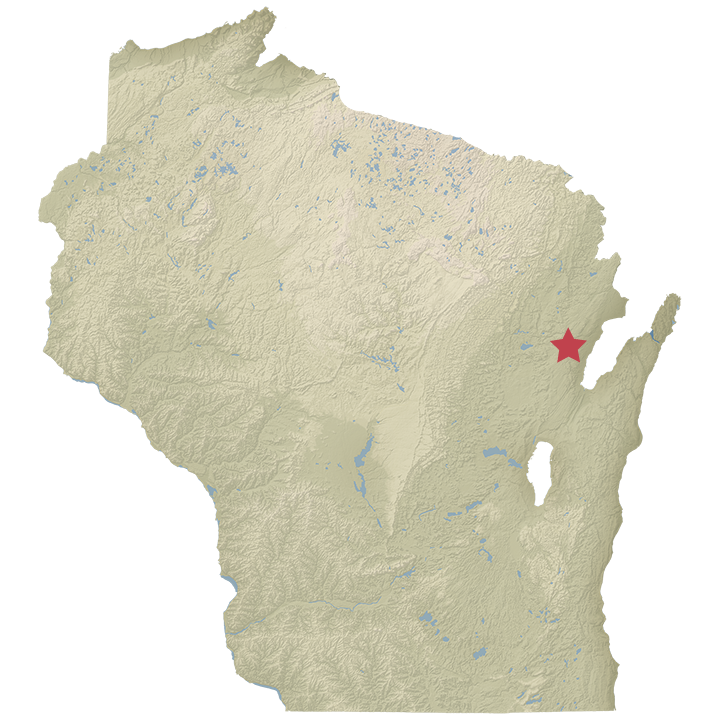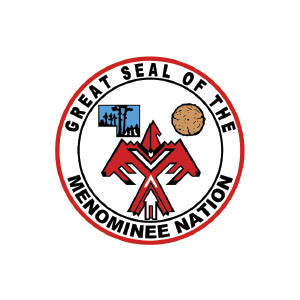
The Menominee Reservation Map: A Living Tapestry of History, Identity, and Sovereignty
More than just lines on paper, a reservation map tells a profound story. For the Menominee Indian Tribe of Wisconsin, the map of their reservation is a vibrant, living document—a testament to millennia of continuous presence, centuries of struggle, and an unwavering commitment to identity and self-determination. To understand this map is to embark on a journey through deep history, resilient culture, and an enduring vision for the future. This article delves into the Menominee reservation map, unpacking its historical layers and revealing the powerful identity it embodies, making it an essential read for both the curious traveler and the dedicated student of history.
The Genesis of a People: Ancient Roots and Vast Territories
The Menominee, whose name means "Wild Rice People" (Omaeqnomenewak in their language), are unique among North American tribes for their unbroken connection to their ancestral lands in what is now Wisconsin and Michigan’s Upper Peninsula. Archaeological evidence and oral traditions confirm their continuous presence in the Great Lakes region for over 10,000 years. Their origin story places their emergence at the mouth of the Menominee River, a sacred site that ties them inextricably to the land.

Before European contact, the Menominee’s territory was vast, stretching across much of eastern Wisconsin, from Green Bay west to the Mississippi River, and north into the Upper Peninsula. This expansive domain was not merely a hunting ground but a carefully managed landscape, where the Menominee practiced sustainable harvesting of wild rice, maple sugar, fish, game, and forest products. Their spiritual beliefs were, and remain, deeply intertwined with this land, fostering a profound stewardship that defines their identity. The map of their original territory would have shown a network of rivers, lakes, and dense forests—a bountiful homeland sustaining a vibrant culture.
A Shrinking World: Treaties, Cession, and the Birth of a Reservation
The arrival of French fur traders in the 17th century marked the beginning of significant changes. While initial interactions were largely cooperative, the subsequent influx of European settlers and the relentless westward expansion of the United States brought increasing pressure on Menominee lands. A series of treaties, often negotiated under duress, systematically chipped away at their ancestral domain.
Between 1817 and 1848, the Menominee entered into numerous treaties with the U.S. government, ceding millions of acres. Each treaty was a painful concession, but the Menominee always fought to retain a portion of their homeland. In 1852, they were pressured to sign a treaty that would have removed them entirely to Minnesota, a proposal they vehemently rejected. Their chiefs, particularly Oshkosh, made a powerful stand, arguing for their right to remain in their traditional territory.

This steadfast refusal led to the pivotal Treaty of 1854. In this treaty, the Menominee retained a portion of their ancestral lands along the Wolf River in northeastern Wisconsin, establishing the boundaries of their current reservation. It is crucial to understand that this land was not "given" to them by the U.S. government; it was land they held onto through negotiation and resilience. The Menominee chose this specific area because of its rich timber resources and the life-sustaining Wolf River, recognizing its potential for future economic and cultural survival. The reservation map, therefore, represents not just a boundary, but a hard-won victory and a promise of continuity.
The Reservation Map Today: A Landscape of Sustainable Sovereignty
Today, the Menominee Indian Reservation spans approximately 235,000 acres, nearly all of it covered by a magnificent, sustainably managed forest. The Wolf River, still a central artery, flows through the reservation, providing both natural beauty and spiritual significance.
Looking at the current reservation map, one sees more than just topographical features. It outlines the geographic embodiment of the Menominee Nation’s sovereignty. Within these boundaries are:

- The Menominee Tribal Government Center: The seat of their self-governance, demonstrating their inherent right to govern themselves.
- Menominee Tribal Enterprises (MTE): A globally recognized example of sustainable forestry. For over 150 years, the Menominee have managed their forest in a way that has consistently produced more timber than it started with, proving that economic development can coexist with environmental stewardship. This practice is a direct outgrowth of their traditional land ethic and a powerful counter-narrative to exploitative resource extraction.
- The College of Menominee Nation: An accredited tribal college dedicated to preserving Menominee language and culture, while also providing contemporary higher education opportunities rooted in their worldview.
- Keshena and Neopit: The primary communities on the reservation, where homes, schools, health clinics, and tribal businesses are located, serving the needs of the Menominee people.
- The Menominee Casino Resort: A key economic engine, providing employment and revenue that supports tribal programs and services.

Every feature on this map, from the dense forest to the administrative buildings, speaks to a purposeful design by the Menominee themselves—a design rooted in their identity as land-based people committed to self-sufficiency and cultural preservation.
Identity Forged in Fire: The Termination and Restoration Eras
The Menominee story is not one of static preservation but of dynamic adaptation and fierce advocacy. One of the most challenging periods in their history, and a defining moment for their modern identity, was the federal "Termination Policy" of the 1950s and 60s. This misguided policy aimed to assimilate Native American tribes by revoking their federal recognition, ending federal services, and liquidating tribal assets.
In 1961, the Menominee became the first tribe to be "terminated." The consequences were devastating: poverty soared, health services deteriorated, and the reservation was converted into Menominee County, the poorest county in Wisconsin. The carefully managed tribal forest became a corporate entity (Menominee Enterprises, Inc.), and there was immense pressure to sell off tribal lands to non-Native interests.
Yet, the Menominee did not surrender. From this crucible of adversity emerged a powerful grassroots movement: Determination of Rights and Unity for Menominee Shareholders (DRUMS). Led by strong Menominee women like Ada Deer, DRUMS fought tirelessly for over a decade to reverse termination. Their struggle became a national symbol of tribal self-determination.
In 1973, their efforts culminated in the passage of the Menominee Restoration Act, signed into law by President Nixon. This act formally restored the Menominee Tribe’s federal recognition and reservation status. The map of the Menominee Reservation, therefore, is also a map of resilience—a physical representation of a people who refused to be erased, who fought for their land and their identity, and ultimately triumphed. This experience cemented their identity as a sovereign nation capable of shaping its own destiny.
The Cultural Heartbeat: Language, Spirituality, and Stewardship
Beyond the political and economic structures, the Menominee reservation map also charts a vibrant cultural landscape. Menominee identity is deeply rooted in their language, spirituality, and their unique relationship with the natural world.
- Language: The Menominee language, an Algonquian language, is central to their identity. Despite historical pressures to abandon it, there are ongoing revitalization efforts, taught at the College of Menominee Nation and within the community, ensuring the transmission of ancestral knowledge and worldview.
- Spirituality: Menominee spirituality is inextricably linked to the land and its cycles. Sacred sites, traditional ceremonies, and the profound respect for all living things are integral to their way of life. The sustainable forestry practices are not merely economic but a direct expression of their spiritual commitment to care for creation for future generations.
- Storytelling and Arts: Oral traditions, storytelling, traditional crafts like basketry, beadwork, and quillwork are vital expressions of Menominee culture, connecting contemporary generations to their ancestors and reinforcing their unique identity.
- Environmental Leadership: The Menominee have emerged as global leaders in sustainable development and environmental stewardship. Their forest management practices are studied worldwide, and their College of Menominee Nation is at the forefront of combining indigenous knowledge with Western science to address environmental challenges. This commitment is a core tenet of their identity—they are the original caretakers of this land.
Experiencing the Menominee Nation: A Traveler’s Perspective
For the traveler seeking a deeper understanding of American history and contemporary Native American life, the Menominee Reservation offers an invaluable experience. It’s a place to move beyond stereotypes and engage with a living, vibrant culture.
- Visit the Menominee Cultural Museum: Located in Keshena, the museum provides an excellent starting point, offering insights into Menominee history, culture, and current initiatives. It’s a place to learn about their origin stories, treaty history, and the journey of termination and restoration.
- Explore the Forest: While direct access to the entire forest may be limited, understanding their sustainable forestry practices is key. Learning about their "leave trees" and selective harvesting methods offers a profound lesson in ecological balance.
- Support Tribal Enterprises: Engaging with tribal businesses, whether it’s the casino resort or other local ventures, directly supports the Menominee Nation’s economic self-sufficiency.
- Attend Public Events: If available, attending public cultural events or powwows (with respectful awareness of protocols) can provide a powerful glimpse into Menominee community life and traditions.
- Engage with Respect: The most important aspect of visiting is to do so with respect, an open mind, and a willingness to learn. Remember that you are a guest on sovereign land.
By visiting and learning, travelers contribute to the Menominee Nation’s ongoing story, helping to amplify their voice and acknowledge their enduring presence and contributions. The Menominee Reservation is not a relic of the past; it is a dynamic, self-governing nation actively shaping its future.
Conclusion: The Map as a Promise and a Beacon
The Menominee Indian Tribe of Wisconsin reservation map is far more than a geographic outline. It is a powerful symbol of a people’s resilience, an enduring testament to their deep historical roots, and a tangible representation of their sovereign identity. It charts their sacred origins, the hard-won boundaries of their current homeland, the scars of historical injustice, and the triumphs of self-determination.
Each line on that map, each tree in their forest, each building in their communities, speaks to a continuous narrative of stewardship, cultural preservation, and unwavering resolve. For travelers and history enthusiasts, understanding this map is to gain insight into the strength of the human spirit, the profound connection between people and land, and the vibrant reality of contemporary Native American nations. The Menominee Reservation map is not just a guide to a place; it is a beacon illuminating a remarkable journey, a promise to future generations, and a call for respect and recognition of a truly unique and enduring people.


